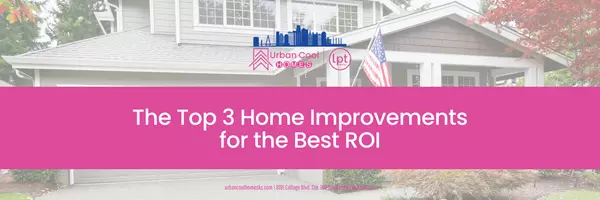Trump’s 50-Year Mortgage Idea: What It Could Mean for Homeowners, Buyers, and the Housing Market

President Donald Trump made headlines this week by suggesting the creation of a 50-year mortgage—a dramatic expansion of the traditional 30-year home loan. His pitch: make monthly payments smaller and homeownership more accessible to more Americans.
The proposal quickly sparked debate among homeowners, first-time buyers, economists, and real estate professionals. Would this new type of loan truly solve the affordability crisis, or would it just delay the inevitable cost of ownership?
Let’s unpack what a 50-year mortgage could mean for homeowners, home buyers, and housing prices—and how it could reshape the real estate landscape, especially in markets like Kansas City.
What Is a 50-Year Mortgage?
A 50-year mortgage works just like a 30-year mortgage but stretches the repayment period across five decades instead of three. That means lower monthly payments—since the loan balance is spread out over a longer term—but also more total interest paid over time.
President Trump downplayed the complexity, telling Fox News, “All it means is you pay less per month. You pay it over a longer period of time. It’s not a big factor. It might help a little bit.”
Bill Pulte, Director of the Federal Housing Finance Agency (FHFA), called it “a complete game-changer,” adding that the agency was exploring new terms like assumable and portable mortgages—options that could allow buyers to take their mortgage with them if they move.
Why It’s Being Proposed Now
Home affordability is one of the biggest challenges in the U.S. housing market.
Home prices are nearly 60% higher than before the pandemic. Mortgage rates, while lower than their 2023 peak, still hover around 6.2%. The median age of first-time buyers has climbed to 38, compared to the late 20s in the 1980s.
With high prices and limited inventory, many would-be homeowners are simply priced out. Extending the term of a mortgage could make monthly payments feel more manageable, even if the long-term cost is greater.
It’s also worth noting that the average American only lives in their home for about seven years before moving. That means most homeowners would never come close to paying off a 50-year loan anyway—making the total interest cost less relevant for some, but the slower equity growth could still impact their ability to sell or refinance later.
How a 50-Year Mortgage Could Affect Home Buyers
The Pros for Buyers
Lower Monthly Payments
The biggest selling point is affordability. By stretching out payments, buyers could see their monthly housing costs drop by 10% to 20%, depending on the rate. That could make it easier to qualify for a home loan and afford a home in desirable areas like Overland Park or Lee’s Summit.
Easier Entry for First-Time Buyers
A longer mortgage could help younger buyers or those with moderate incomes finally get a foot in the door—literally. For someone renting at $2,000 per month, the ability to buy a home for a similar payment could shift the scales toward ownership.
Flexibility for Long-Term Holders
Buyers who plan to stay in their home for decades might not mind a longer repayment period. If they view the home as a lifetime asset, the slower pace of equity buildup might not be a major concern.
Potential Refinancing Opportunity
If interest rates drop in the future, buyers could refinance into a shorter-term loan, capturing lower rates after securing their home now.
The Cons for Buyers
Much More Interest Over Time
Extending the loan by 20 extra years dramatically increases total interest paid. For example, a $400,000 loan at 6% for 30 years costs about $463,000 in interest. The same loan over 50 years would cost roughly $718,000 in interest—more than the home’s original value.
Slower Equity Growth
The early years of a mortgage primarily go toward interest. With a 50-year term, that slow start is even slower. Homeowners would build equity at a snail’s pace, making it harder to refinance or sell without owing more than the home is worth—especially if the market dips.
Still Paying in Retirement
For buyers in their late 30s or 40s, a 50-year mortgage could mean making payments well into their 80s or 90s unless they refinance or sell. That’s a lifetime commitment.
Limited Lender and Investor Appetite (At Least Initially)
Until regulations catch up, lenders and investors may hesitate to back such long-term products, limiting early availability or driving higher rates.
How a 50-Year Mortgage Could Affect Homeowners
The Pros for Current Homeowners
Increased Buyer Pool
More buyers able to afford payments means a potentially stronger market for sellers. That could make it easier to sell homes, especially those in the mid- to upper-price ranges.
Refinancing Options
Current homeowners struggling with high payments might eventually refinance into a 50-year mortgage to reduce monthly strain—freeing up cash flow for other financial goals.
Higher Appraisal Support
If affordability improves, comparable home sales may rise, pushing appraisal values higher—benefiting homeowners’ equity positions, at least on paper.
The Cons for Homeowners
Inflated Home Prices
Increasing the length of mortgage terms doesn’t fix the root problem—supply. With more buyers qualifying for homes, demand could surge again, sending prices even higher. Homeowners might gain equity on paper, but new buyers would face even steeper entry costs.
Longer Debt Horizons
Refinancing into a 50-year mortgage may feel like short-term relief but could keep owners in debt for decades longer—potentially eating into retirement planning.
Market Instability
Introducing long-term loan products changes how lenders and investors price risk. If the 50-year loan market behaves unpredictably, it could create instability similar to that seen with subprime lending before the 2008 crash.
What Could Happen to Housing Prices
Economists are divided, but most agree: if you make it easier to borrow, home prices usually rise.
Lower Monthly Payments = Higher Price Tolerance
Buyers don’t shop for a loan term—they shop for a monthly payment. If a 50-year loan drops payments by $200–$300 per month, that could add $30,000–$50,000 to what they’re willing to offer for a home.
More Demand, Same Supply
The U.S. already faces a housing shortage of more than 3 million homes, according to Freddie Mac. Unless supply grows rapidly, easier credit terms will simply push prices higher—especially in high-demand metros like Kansas City, Dallas, and Nashville.
Short-Term Boost, Long-Term Bubble Risk
Prices could rise sharply in the first few years after adoption as buyers flood the market. But if inflation, interest rates, or investor confidence shift, a pullback could follow—leaving long-term borrowers exposed.
Wider Wealth Gap
Homeowners who already own property could see their values rise even further, while renters and first-time buyers face worsening affordability despite lower payments.
The Real Problem: Supply, Not Structure
Experts across the political spectrum point out that the U.S. doesn’t have enough homes—especially entry-level homes.
While extending mortgage terms could help some people buy sooner, it doesn’t create more houses. Builders are still facing high land costs, limited labor, and expensive materials.
Until new construction ramps up, changes in loan structure may treat the symptoms, not the cause.
As one housing economist told Reuters, “A 50-year mortgage might ease monthly payments, but it won’t build more homes. To truly improve affordability, we need to fix the supply side.”
How It Could Play Out in Markets Like Kansas City
For the Kansas City Metro, the effects could be mixed.
Short-Term: More buyers could qualify, especially first-timers and those relocating for work. That could create upward price pressure in affordable areas like Olathe, Blue Springs, and Shawnee.
Mid-Term: Higher demand without added inventory could make bidding wars more common again.
Long-Term: If 50-year mortgages become mainstream, we might see slower equity growth for local homeowners—but also more consistent buyer activity during periods of higher rates.
For Kansas City specifically, where the median home price sits near $375,000, a 50-year mortgage could reduce monthly payments by around $250–$300 compared to a 30-year loan. That’s meaningful for buyers but comes with trade-offs that agents and lenders would need to explain carefully.
The Investor Angle
Real estate investors and landlords could also benefit. Lower monthly payments make it easier to cash-flow properties, and the longer term could attract new investor participation in the rental market.
However, the same inflationary pressure could make acquisition more expensive, limiting returns unless rents rise accordingly.
Final Thoughts: Helpful Innovation or Dangerous Distraction?
A 50-year mortgage may sound like a bold solution, but it’s ultimately a trade-off between short-term affordability and long-term cost.
It could help some buyers purchase sooner and ease payment pressure for existing owners—but at the cost of slower wealth-building and potentially higher prices overall.
If implemented wisely—with proper oversight, consumer education, and supply-side reforms—it could become a useful tool in a broader affordability toolkit. But if adopted hastily, it could inflate prices, stretch consumer debt, and leave homeowners paying for their “dream home” long after the dream has faded.
Key Takeaways
For Home Buyers: Expect lower monthly payments but slower equity growth and higher lifetime costs.
For Homeowners: Potential value growth, but also greater market volatility and long-term debt risk.
For the Market: Possible short-term boost to sales and prices—but without new supply, affordability challenges will persist.
Categories
Recent Posts











